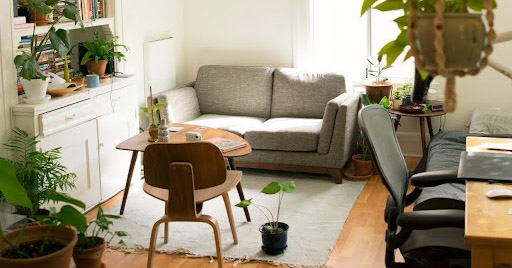Furnishing Your First Home


Moving into a new home can be a liberating experience. This landmark moment in your life comes with unmatched excitement, but can also be overwhelming. Decorating the expansive rooms, plain walls, and bare floors may feel daunting, especially if you're on a budget.
Fortunately, you have a blank space and numerous options to work with when furnishing a new home. With guidance, you can style your haven to reflect your personality and match your needs. Here are several creative and budget-friendly interior design tips for furnishing your home.
As eager as you may be to fill your new home, take a breath to envision your space. With inspiration from different interior design sites, create a vision board to narrow your options. You can research various brands and materials to decide on the ideal style and feel for your new house.
Proceed to map out the rooms by putting together a floor plan with appropriate measurements of your space before buying anything. Taking room dimensions ensures the selected furniture fits your new home and allows for good flow. Remember to measure doorways and hallways to ensure you can move your new pieces in.
With the layout and furniture in mind, create a budget for what you need to buy. When on a tight budget, you can divide your purchases into needs and wants. Substantial pieces are crucial to any living space, and you can acquire extra furnishings later.
Each room in your home serves a unique purpose and deserves thoughtful consideration when it comes to furnishing. This room-by-room home essentials guide will ensure your living space is comfortable and functional.
The living room is the core of your home, providing a space for relaxation and entertainment, so it's crucial to start with a strong foundation. A carpet or rug can serve as the room's anchor, providing warmth while linking other pieces together. It can also inspire the room's overall color and design.
Additionally, invest in a stylish and comfortable couch offering a cozy place to sit. You can pair it with a coffee table, which is excellent for holding drinks and snacks. If you have enough space, incorporate accent chairs and side tables.
Also, consider adding storage solutions like shelving units and ottomans with hidden compartments to keep clutter away. For the finishing touch, accessorize your living room with throw pillows, artwork, and house plants.
The kitchen and dining room provide a space for preparing and indulging in sumptuous meals while sharing memories. Functionality and efficiency are the priorities when furnishing these spaces. A refrigerator, stove, dining table, and chairs are non-negotiables. Add different kitchenware depending on your cooking and eating habits, such as:
Your home office, if you have one, needs to inspire productivity and focus, regardless of whether being a dedicated room or a carved-out workspace. Choose a comfortable, adjustable desk and pair it with an ergonomic chair. Additionally, look for storage options like shelves, filing cabinets, and organizers to keep your workspace tidy. Personalizing the space with artwork, plants, and adequate lighting can inspire creativity and focus.
Maximize your bathroom's functionality with essential fixtures and storage solutions. You can invest in a quality vanity with ample countertop and cabinet space for toiletries and linens. Other bathroom essentials include:
If your new home comes with an outdoor space, you may have to plan for patio furniture. Extend your living space outdoors with a comfortable seating area. Invest in something durable like a bistro set, which includes lounge/patio chairs and a small table. Consider installing lighting fixtures like string lights or solar lanterns to add ambiance in the evenings.
Once you have an idea of the style and different items your new home needs, you can start shopping. The key to shopping while saving money lies in taking the time to explore your options. First, take stock of what you already own and determine which pieces will work in your new space. This tactic helps you cut costs as you only need to focus on replacing worn-out furniture and filling the gaps in between.
When shopping, check out online marketplaces, auctions, and classifieds in addition to the conventional stores. Flea markets, yard sales, and vintage stores are excellent options if you're considering thrifting and upcycling. You can also wait for promotions and off-season sales to buy pieces at a bargain. Ensure you properly appraise any secondhand item before purchasing it by assessing for missing parts and structural integrity.
Furnishing a new home may feel overwhelming, especially when you have lots of space and nothing to fill it with. Keeping these interior design and budget tips in mind gives you a place to start your home decor journey, and remember, it's just that: a journey.

Coverage not available in CA, WA and HI